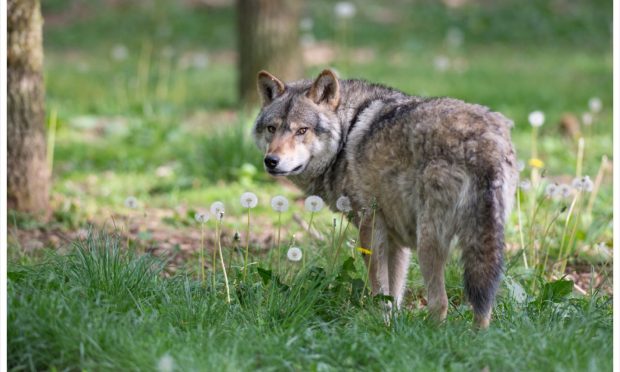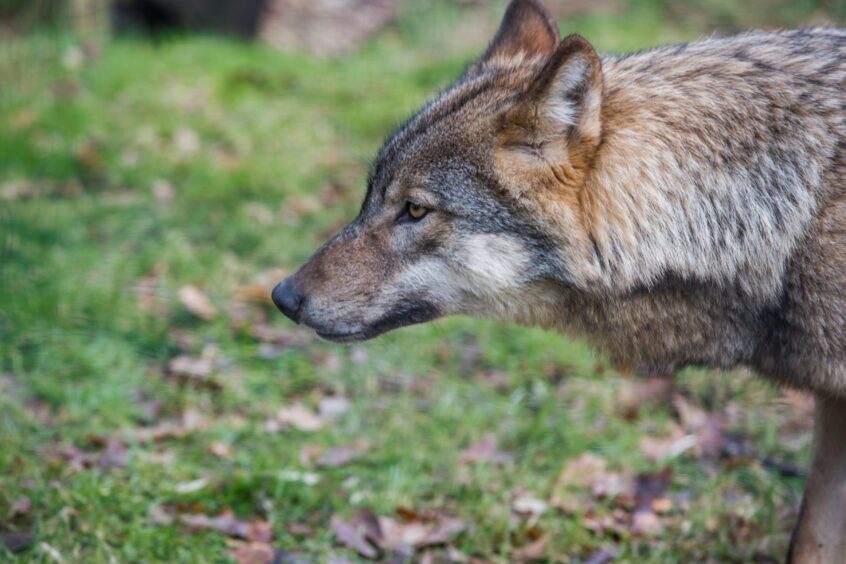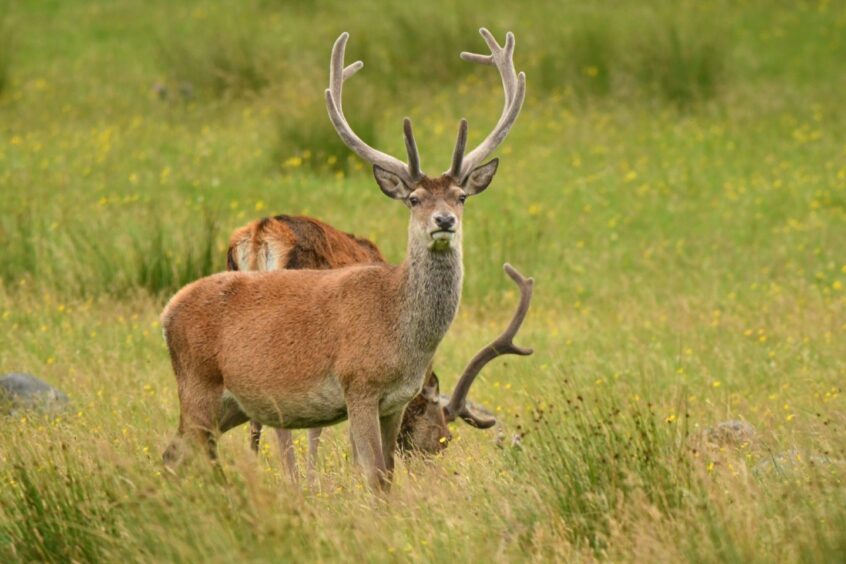Bringing wolf packs back to the Highlands could help the UK meet climate targets by reducing the number of red deer, a new study published today says.
Researchers believe reintroducing around 167 of the apex predators to the wilds of the Highlands could result in reducing carbon dioxide emissions by around one million tonnes per year.
Scientist at Leeds University carried out their ground-breaking study exploring the potential impact of wolves on the environment.
They used a predator-prey model to estimate that a reintroduction of wolves to areas in the Cairngorms, south-west Highlands, central Highlands and north-west Highlands would lead to a total population of around 167 wolves.
That would be enough to reduce red deer populations to a level that would allow trees to regenerate naturally.
The study predicts that could lead to an expansion of native woodland that would store an extra one million tonnes of CO2 each year.
This is equivalent to approximately 5% of the carbon removal target for woodlands across Britain that has been suggested by the UK’s Climate Change Committee as being necessary to reach net-zero by 2050.
‘Controversial’ Highland wolves could help restore environment
The researchers recognise that the debate around bringing wolves back to the Highlands is controversial, particularly among farmers and deer stalkers.
But lead author Professor Dominick Spracklen said: “There is an increasing acknowledgement that the climate and biodiversity crises cannot be managed in isolation.
“We need to look at the potential role of natural processes such as the reintroduction of species to recover our degraded ecosystems and these in turn can deliver co-benefits for climate and nature recovery.”
Wolves were eradicated from Scotland around 250 years ago, leaving red deer with no natural predators and allowing their populations to grow largely unchecked.
Despite ongoing management, red deer numbers in Scotland have significantly increased over the last century, with the latest estimates thought to be as high as 400,000.
Re-introduction would require public consultation
Scotland today has one of the lowest levels of native woodland in Europe, with only 4% of country covered.
The wolf population in western Europe now exceeds 12,000 and they occupy 67% of their former European historical range, including human-dominated landscapes in central Europe.
Even the Netherlands, a country more densely populated than Scotland, now has wolves in the wild again.
Researchers also say there could be ecotourism benefits from wolf reintroduction.
Lee Schofield, a co-author of the study, added: “Our aim is to provide new information to inform ongoing and future discussions about the possibility of wolf reintroductions both in the UK and elsewhere.
“We recognise that substantial and wide-ranging stakeholder and public engagement would clearly be essential before any wolf reintroduction could be considered.
“Human-wildlife conflicts involving carnivores are common and must be addressed through public policies that account for people’s attitudes for a reintroduction to be successful.”



Conversation